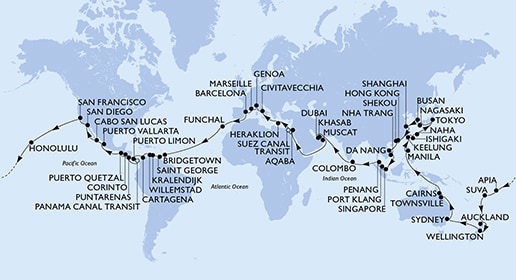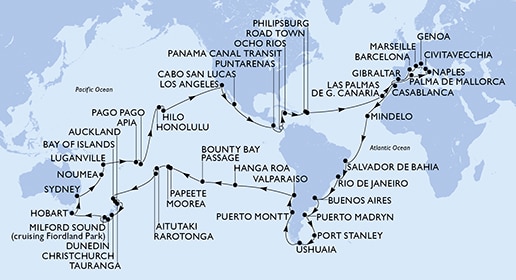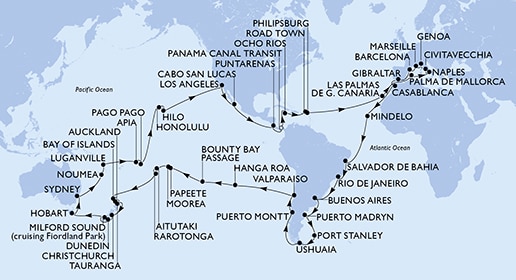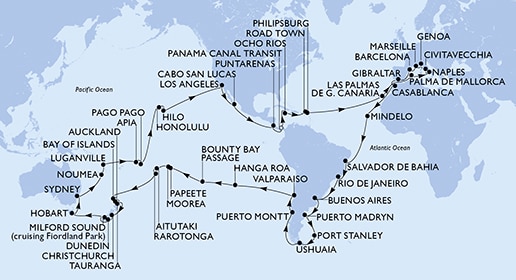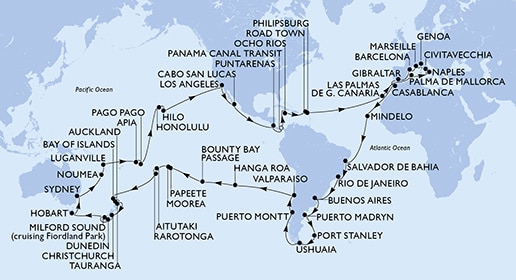
Port Cabo San Lucas
Cabo San Lucas, located at the southern tip of the Baja California Peninsula in Mexico, is a world-renowned destination celebrated for its luxurious resorts, vibrant nightlife, and stunning coastal scenery. One of its most iconic landmarks is El Arco (The Arch), a striking natural rock formation where the Sea of Cortez meets the Pacific Ocean. Visitors can take boat tours to admire the arch, explore nearby Lover's Beach and Divorce Beach, or enjoy snorkeling and diving in the crystal-clear waters teeming with marine life.
Cabo San Lucas is also a hub for outdoor adventures and water activities. From whale watching during migration season to deep-sea fishing in what’s known as the “Marlin Capital of the World,” there’s no shortage of exciting ways to connect with nature. On land, the surrounding desert offers opportunities for ATV tours, ziplining, and hiking. After a day of exploration, the town comes alive with energetic nightlife, gourmet dining, and luxury shopping. With its blend of natural beauty, thrilling activities, and sophisticated amenities, Cabo San Lucas is a dream destination for travelers of all kinds.
History
Cabo San Lucas, located at the southern tip of the Baja California Peninsula in Mexico, boasts a fascinating history that intertwines indigenous heritage, colonial exploration, and modern development. Before the arrival of Europeans, the area was inhabited by the Pericú people, a nomadic indigenous group who lived off fishing, hunting, and gathering. In 1534, Spanish explorers led by Hernán Cortés arrived in the region, marking the beginning of European influence. Despite early attempts at colonization, the harsh desert environment and resistance from the Pericú made large-scale settlement difficult during the colonial period.
Cabo San Lucas remained a quiet fishing village for centuries until the mid-20th century, when its natural beauty and proximity to the United States made it a desirable tourist destination. By the 1970s, the Mexican government began investing in infrastructure, transforming Cabo San Lucas into a world-famous resort town. The iconic El Arco, a natural rock formation at Land’s End, became a symbol of the region, attracting visitors from around the globe. Today, Cabo San Lucas is celebrated for its luxury resorts, vibrant nightlife, and recreational activities, while its rich history remains preserved in its cultural traditions and archaeological sites.





 With air transport to the port
With air transport to the port



